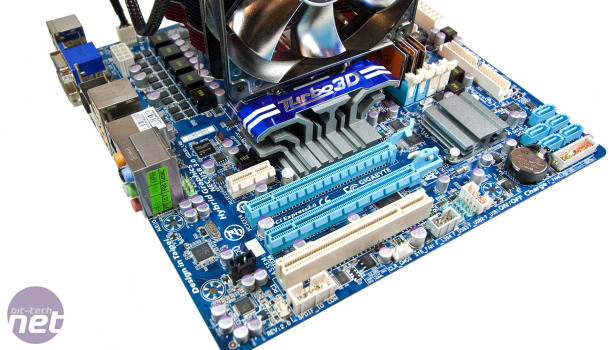Conclusion
Looking at the data, it seems as if the AMD 880G chipset is a damp squib - AMD has literally dialed the 785G up a notch and slapped on a new number. As you can see from the results, only when AMD fiddles with how the game is rendered does it actually make a big difference, with other games showing no or only slight speed improvements. Worse still, the driver hacks for Trackmania made it look like we are playing it on a SNES.The boards still support the same Socket AM3 CPUs as before, yet since most 785G boards support the latest Phenom II X6 6-core CPUs anyway, and the features of the chipset haven't been upgraded, there's very little point ditching a 785G mother for an 880G one.
It could be argued that the SB850 Southbrdige is the biggest benefit, with its SATA 6Gbps and RAID 5 support. Previous 785G boards were almost always paired with the SB 710 Southbridge that offered neither of these features.
Realistically though, SATA 6Gbps currently has little benefit for hard disks, which struggle to saturate SATA 3Gbps connections. Meanwhile, compatible SATA 6Gbps SSDs cost ten times as much as cheap 880G motherboards, so are an unlikely upgrade. We'd ignore the RAID 5 support too, as RAID rarely offers much if any increased performance and isn't as robust a backup method as an external drive on or an online service. If you do value both or either of the core benefits of the SB850 Southbridge, remember that a lot of 880G board won't use it, so check the specs before buying.
One issue with buying a 785G over a 880G, beyond the strong possibility that the 880G board might cost more and yet provide no extra speed or useful features, is that the 880G board might not support core unlocking while the 785G probably will. Core unlocking was built into the 785G chipset, but removed in the 8-series chipset range due to fears that it was harming AMD's reputation. Some manufacturers have found a way to implement core unlocking on 8-series boards, and it's not guaranteed that the option will be available on all 785G boards, so check before buying.
AMD still has the advantage of allowing you to mix dual- triple- quad- or 6-core CPUs with integrated graphics, while Intel limits you to only being able to use certain Core i3 and Core i5 CPUs - there's no integrated GPUs available for an LGA1366 system, or even an LGA1156 Lynnfield-based system. That could be interesting news for someone not interested in gaming - video encoders can slap a hefty Phenom II X6 into an 880G motherboard and have a neat and reasonably power-efficient and quiet PC to render on, for example. Then again, given the speed advantage Intel's CPUs - particularly the high-end models - enjoy over AMD's Phenoms, it seems unlikely that the necessity of buying a £30 graphics card will stop people building rapid Core i7 systems.
In fact, if you're building a cheaper PC, Intel's CPUs with GMA HD integrated GPUs might actually be a better bet than an AMD system. Depending on how much you have to spend, the Intel GPU actually coped with our game and video playback tests very well - just flick through the pages to see. We struggle to see much of a use for the 880G as a chipset, though we'll do our usual best to scout out some interesting boards to test in the coming months to see if we can find something that appeals.

MSI MPG Velox 100R Chassis Review
October 14 2021 | 15:04










Want to comment? Please log in.